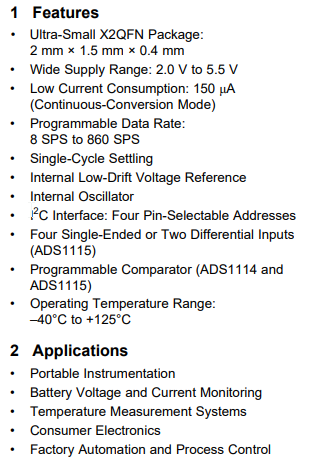Hi Bart,
first choose you adc. The internal ADC might sound nice (one less component) but what I read not very precise, slow and some other flaws. I use ESP8266s and the adc there is bad. The ADS1115 is nice, cheap (cheaper than a fried ESP32 and cheaper than a PI) , versatile.
Don't worry the is not much that can go wrong in all cases.
internal ADC
you might want to use the one of the 2 ADC(s) (muliplexed to up to 18) of your ESP32. Then you will need a voltage devider.(two resistors) to meet the voltage levels from the 0-5V to 0-3.3V (on an ES8266 you only have one ADC 0-1V often with build in voltage devides to 0-3.3V)
So for the 0-5 V you need something like this
Where R1 = 1K and R2 = 2K
or do the calculation here (Voltage divider: calculator and application – Renzo Mischianti)
Chose values over 1K because you will drain permanently some current via the two resistors (important to know if you run from batteries)
external ADC
Or you might use an extranal ADC like the ADS1115 with 4 ADCs 16Bit resuluton, configurable amplifier and .... (I love this, cheap, accurate versatile) and read it via I2C (Hey I found the correct schematic).
Power the ADC with 5V! (then the maximum voltage on the analog pins is 0.3V over the supply voltage! So absolute save. Plugging in an USB charger (1A) and leave away the power jack is perfect.
There is no protection on the input pins ... so be a little bit careful!
There is an software controlled amplifier on all input pins (very handy)
But with the wrong settings you might be able destroy the adc too!
But the default is save no worries.
And don't worry about the 5V on SDA (and ALERT/RDY)... the ESP32 can handle this
If you have more than one i2c device on your bus you need pull up resistors (common 4.7K) to +5V. But not for only one device.
And last but not least choose your firmware
A) Homebrew (you can start with my own if you don't want to start from scratch including full homie convention support, ota updates via mqtt ... detailed logging via serial and syslog) But I will have to upgrade it to ES32 as currently only ESP8266s are supported. No problem a task on my backlog since ages.
B) One of the Swiss army knives like Tasmota, esphome ..... (I can't help here because I don't use them any more)
Calibration
you will receive a 16bit figure of the voltage range choosen (by the amplifier)
Best is to have a pressure meter for reference (your build in bight do). Or do it without units and determine the desired value and the value when you like to fire an alarm.
To get values in the units you desire (and don't fly to mars) you need two reference points measured and the corresponding voltages and do the math. Best is something like 1 and 2 Bars (0 might be inaccurate. (all above normal pressure before somebody start to split hairs here).
But you have to lower the pressure of your heating circulation (or raise it to max. 3 Bar and lower it later to normal 2 Bar or go down to 1 to get the maximum precision) .... ![]() Have fun ...
Have fun ...





 Have fun over the weekend
Have fun over the weekend 










